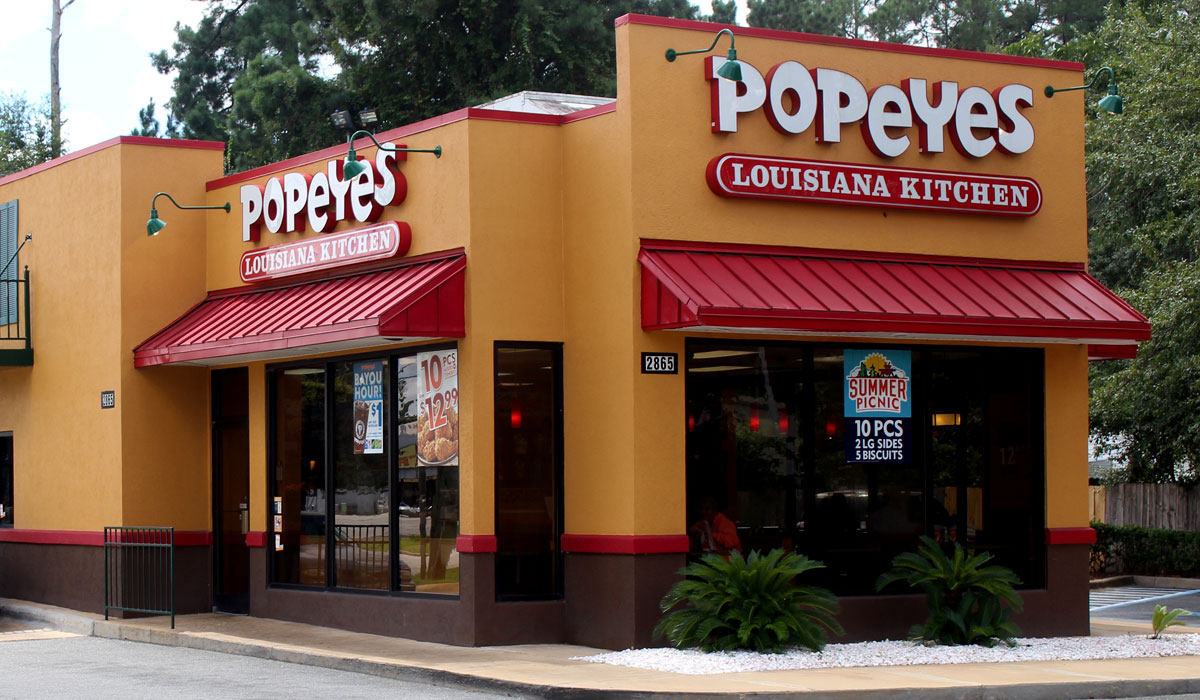Restaurant Brands International turned up the digital dial this past quarter, revealing that it was testing delivery in “several hundred restaurants” at both Burger King and Popeyes Louisiana Kitchen. Favorable international results encouraged RBI to further expand domestic tests, chief executive officer Daniel Schwartz said, and early U.S. pilots were providing solid feedback, including a customer affinity for dinner and late-night orders—two segments that typically return higher checks.
Wednesday brought the first major delivery announcement for the company.
Popeyes inked an agreement with Uber Eats to expand its delivery service in New York City, Chicago, Miami, and Washington. How many restaurants this entails exactly wasn’t shared, but it’s probably safe to say it’s more than “several hundred.” Popeyes grew its unit count nearly 7 percent in the first quarter, year-over-year, to bring the total to 2,926, up from 2,743.
“As seen on social media over the years, we’ve tried to come to the rescue of our loyal guests, celebrities, athletes, chefs, and others who have made their cravings for Popeyes known,” said Chad Crawford, president, North America for the Popeyes, in a statement. “Now with Uber Eats, we can provide the same doorstep delivery service to all of them. We’re excited to give our guests the great taste they love with the added convenience of delivery.”
Popeyes said Uber Eats data showed that fried chicken orders rose 54 percent over the last year, and biscuits spiked 83 percent.
“Putting delicious food exactly where and when you want it is our specialty,” added Liz Meyerdirk, global head of business development at Uber Eats, in a statement. “Popeyes has a rich history of serving up delicious fried chicken and classic signature sides and we’re excited to make it even easier for our users to get the food that fits their busy lives, delivered at Uber speed.”
Uber Eats is available globally in more than 200 cities. Popeyes’ same-store sales lifted 3.2 percent in the first quarter. RBI, which also operates Tim Hortons, posted revenues of $1.1 billion in the quarter, up 7 percent. Net income came in at $151 million, or 60 cents per share, from $50.2 million (21 cents).
Is Burger King up next? That will be a topic worth following. Burger King has 16,859 total restaurants. Schwartz said the burger chain’s delivery was doing well in early tests. “We’re encouraged by the results so far,” he said in the call. “Though it is still early, delivery has been successful for us in many of our international markets, including places like China and Spain, and we intend to further expand our test in the U.S. over the coming months.”
Burger King tested BK Delivers in late 2011. It grew into large cities, including San Francisco, Washington, D.C., Los Angeles, Chicago, Oakland and San Jose, California, Miami, Brooklyn, New York, Las Vegas, and Houston. Guests could order from menus online or call a toll-free number. Burger King also unrolled proprietary thermal packaging technology to ensure food arrived hot and to separate cold from warm items. The service flamed out, however. Back in December, Schwartz said the company was “working on it” in regards to finding a solution for today’s marketplace. In January, RBI appointed chief financial officer Josh Kobza to chief technology and development officer—a role that reflected Burger King’s renewed commitment to technology.









